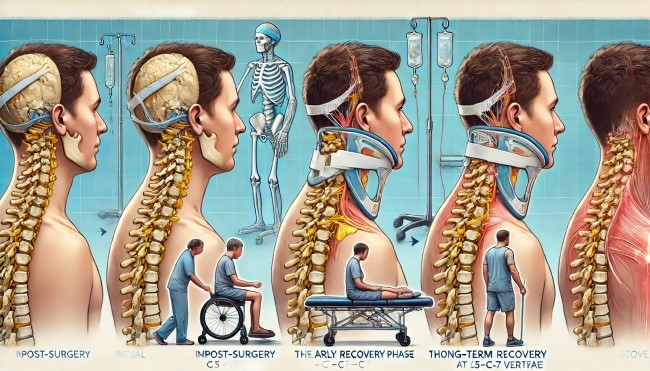Neck Surgery C5-C6-C7 Recovery Time: A Comprehensive Guide
Understanding the Path to Recovery

Recovering from neck surgery involving the C5-C6-C7 vertebrae is a journey that requires patience, dedication, and a clear understanding of the process. This comprehensive guide will provide you with everything you need to know about the recovery time for neck surgery at these levels, including factors that influence recovery, typical timelines, and essential post-operative care strategies.
The recovery time for neck surgery at the C5-C6-C7 levels typically ranges from several weeks to several months, depending on the type of surgery performed and the patient’s overall health. Initial recovery involves managing pain and limiting physical activities, with significant improvements usually seen within the first 4 to 6 weeks. Full recovery, including the fusion of vertebrae, may take up to a year, with physical therapy playing a crucial role in regaining strength and mobility.
Introduction
Neck surgery, particularly at the C5-C6-C7 levels, is often required to alleviate chronic pain, nerve compression, or spinal instability. Understanding the recovery process is essential for patients to set realistic expectations and actively participate in rehabilitation. This article delves into the recovery timelines, factors affecting healing, and practical strategies to ensure a smooth and successful recovery.
Types of Neck Surgery
Anterior Cervical Discectomy and Fusion (ACDF)
ACDF is a standard procedure where the damaged disc is removed and replaced with a bone graft, which fuses the adjacent vertebrae over time. This surgery aims to relieve nerve compression and stabilize the spine.
Cervical Disc Replacement
This procedure replaces the damaged disc with an artificial one, maintaining a more natural neck motion than fusion. It’s often chosen for younger, more active patients.
Posterior Cervical Fusion
This involves fusing the vertebrae from the back of the neck, and it is typically used for more extensive spinal instability or deformities.
Initial Recovery Phase
Hospital Stay and Immediate Post-Op Care
Patients usually spend one to two days in the hospital. Pain management is a priority during this time, and patients may be fitted with a neck brace to immobilize the area and support healing.
First Few Weeks at Home
The first 4 to 6 weeks post-surgery are crucial. Patients are advised to avoid heavy lifting, driving, and strenuous activities. Light activities that promote healing without straining the neck are encouraged. Pain and swelling are managed with prescribed medications, and keeping the incision site clean is vital to prevent infections.
Physical Therapy and Rehabilitation
Starting Physical Therapy
Physical therapy typically begins a few weeks after surgery, depending on the patient’s condition and the surgery performed. A physical therapist will create a personalized plan to improve neck mobility, strength, and flexibility gradually.
Long-Term Rehabilitation
Complete recovery may take up to a year, with the fusion process (if applicable) solidifying within six months to a year. Continued physical therapy is essential to maintain neck strength and flexibility and to prevent future injuries.
Factors Affecting Recovery Time
Age and Overall Health
Younger patients with fewer health issues tend to recover faster. Conversely, older individuals or those with chronic health conditions may experience a prolonged recovery period.
Lifestyle and Activity Level
Patients who lead an active lifestyle and engage in regular physical activity may recover more quickly. However, those with physically demanding jobs may need to take a more extended period off work.
Common Complications and How to Manage Them
Pain Management
Post-operative pain is joint and can be managed with medications and physical therapy. Persistent or severe pain should be reported to the surgeon.
Swallowing and Voice Issues
Some patients may experience difficulty swallowing or hoarseness after surgery. These symptoms usually improve over time, but a healthcare provider should evaluate persistent issues.
Monitoring for Infections
It is crucial to keep the incision site clean and dry. Any signs of infection, such as redness, swelling, or discharge, should be reported immediately.
Long-Term Outlook and Prevention
Maintaining Neck Health
Long-term recovery involves keeping the neck healthy through regular exercise, proper ergonomics, and avoiding activities that strain the neck.
Preventing Future Injuries
Continued physical therapy and adopting a healthy lifestyle can help prevent future neck problems. Regular check-ups with a healthcare provider ensure that any issues are addressed promptly.
Conclusion
Neck surgery at the C5-C6-C7 levels can significantly improve a patient’s quality of life by relieving pain and restoring function. Understanding the recovery process, adhering to post-operative care instructions, and actively participating in rehabilitation is critical to a successful outcome. With patience and dedication, most patients can expect to return to normal activities, often with reduced pain and improved neck function.



